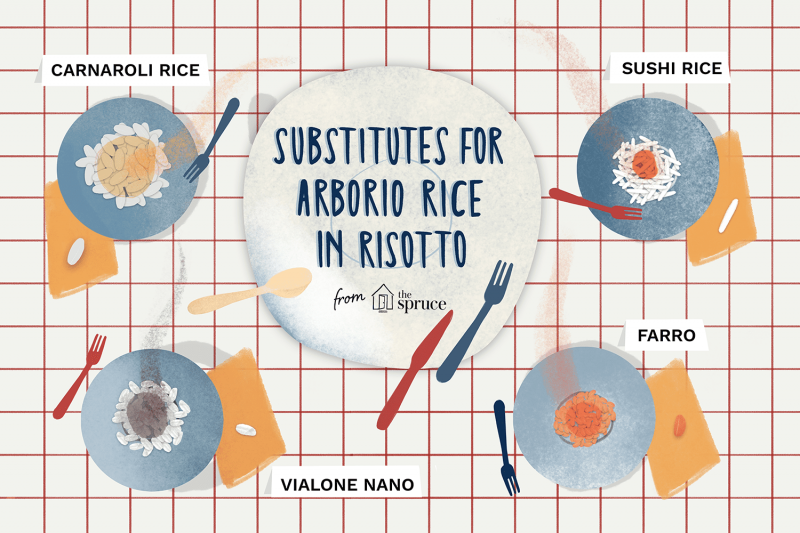Risotto—a dish that originated in northern Italy—takes medium-grained Arborio rice and combines it with butter and onion, water or stock, white wine, and cheese for a creamy main dish balanced by a “toothy” crunch (aka, al dente). Traditionally, Italians used in-season ingredients, like asparagus or butternut squash, to flavor this economical, yet time-consuming, recipe. And today, new-school chefs make risottos with a plethora of ingredients, including meats like prosciutto and mushrooms like shiitakes (for an Asian take on a traditional Italian staple). And while most recipes still call for Arborio rice, home cooks can liven up both traditional and modern risotto recipes with a variety of Arborio rice substitutes.
Arborio Rice Characteristics
Rice is organized into three groups: long-, medium-, and short-grain, based on its length-to-width ratio when cooked. Short-grain rice plumps to an almost spherical shape. Long-grain rice resembles that of a long, drawn-out grain of wheat. And medium-grain falls somewhere in between. While Arborio plumps as it cooks, making it appear shorter, it is actually classified as a medium-grain variety.
All rice—whether it's long- or short-grained—contains starches called amylose and amylopectin. These starches define the texture of the rice as it cooks. Amylose does not break down in the cooking process, while amylopectin gives rice a gelatin-like consistency when cooked. Most short-grain rice contains more amylopectin and less amylose than their long-grained counterpart. And its this trait found in Arborio rice that gives risotto dishes a characteristic creaminess. Arborio rice also contains a structural deformity called "chalk" (not the kind used on a blackboard), that preserves its firm center, even as it cooks and the surrounding starch breaks away. Chalk keeps the Arborio rice intact, creating an al dente chewiness prized by Italian chefs.
Italian Substitutes
For a successful risotto, any substituted grain must possess the same basic qualities of Arborio rice. It must be high enough in amylose to maintain an al dente texture, even after long stovetop cooking. Two Italian rice varieties fit this bill perfectly, and, in some cases, may work even better than Arborio rice. Carnaroli rice, a medium-grained and so-called superfino variety, contains an even higher starch content than Arborio. This variety is a classic choice for risotto in certain parts of northern Italy. A harder-to-find option is Vialone Nano, a semifino medium-grain rice with a full-bodied texture, grown in the Veneto region. Other Italians swear by Balo, Calriso, or Maratelli rice varieties, as they traditionally used what was grown nearby or on family farms. Even still, risotto connoisseurs claim all Italian rice varieties trump any store-bought American Arborio.

Farro
Farro, an ancient grain, has recently gained popularity in the health food world. This hulled wheat grain, usually of spelt or emmer varieties, creates a robust modern risotto (or, farrotto) with more tooth than cream. Because this grain still contains its bran, it traps the amylopectin inside and never fully develops a creamy texture. However, modern chefs prize farro for its nutty flavor, giving a traditional risotto a leg up on taste. Try pearled farro as an Arborio rice substitute, if you like things a little creamier. Or tweak your recipe by adding most of the liquid upfront—instead of a little at a time—to help the grain cook fully and evenly. Adventurous cooks can look beyond farro and try bulgur wheat or barley, instead, to achieve a similar nutty flavor.
Sushi Rice
If you're in a pinch, live nowhere near an Italian market, or prefer a thriftier option to pricey imported Italian grains, sushi rice will get you by. This short-grain variety has both a high-starch content and a firm texture. To substitute sushi in a risotto, make sure you don't rinse it first (like you do for sushi), as keeping the starches on the grain will yield the best results. And while sushi rice won't quite give you the rich flavor of Arborio or farro, it does provide a hack option for a quick weeknight meal. Just make sure not to overcook a sushi rice risotto, as you may end up with a sticky glop of a mess.
